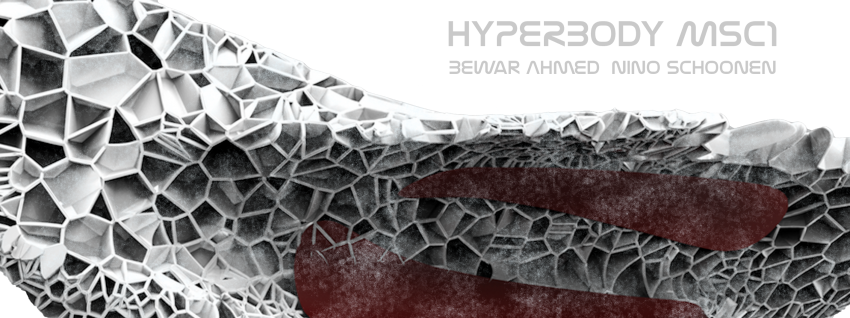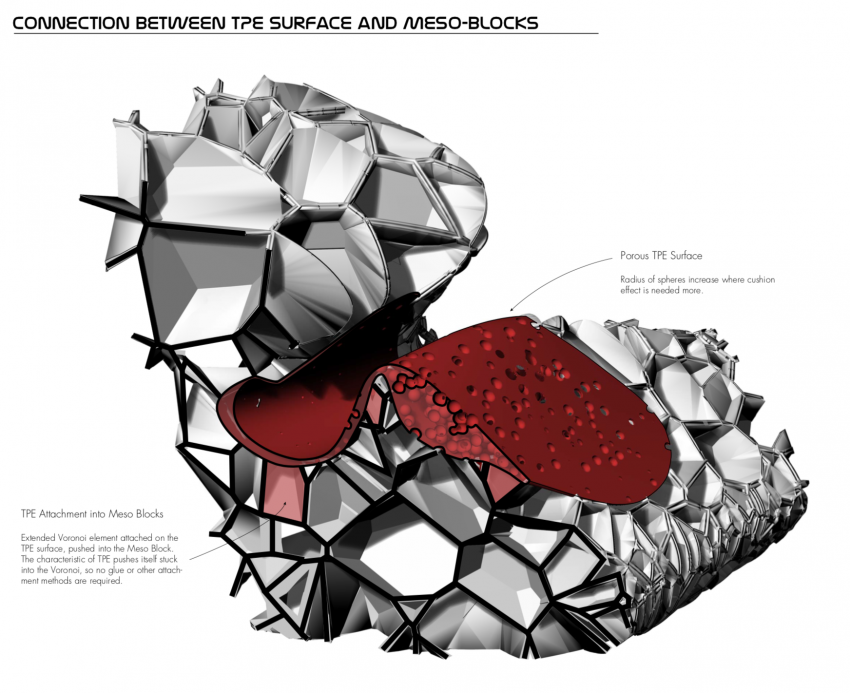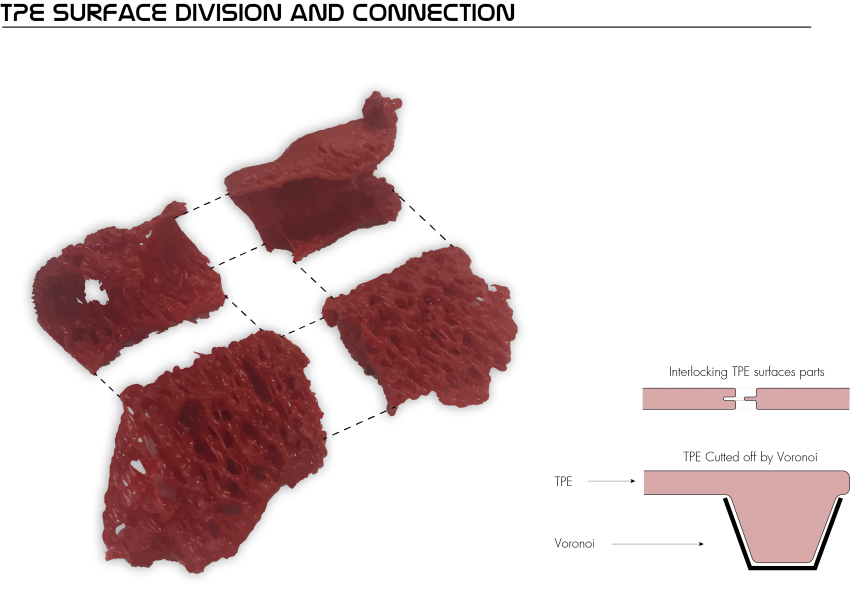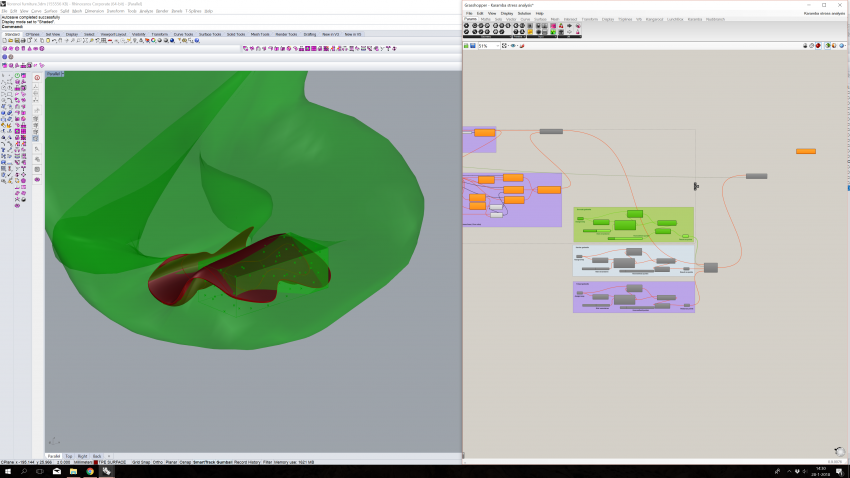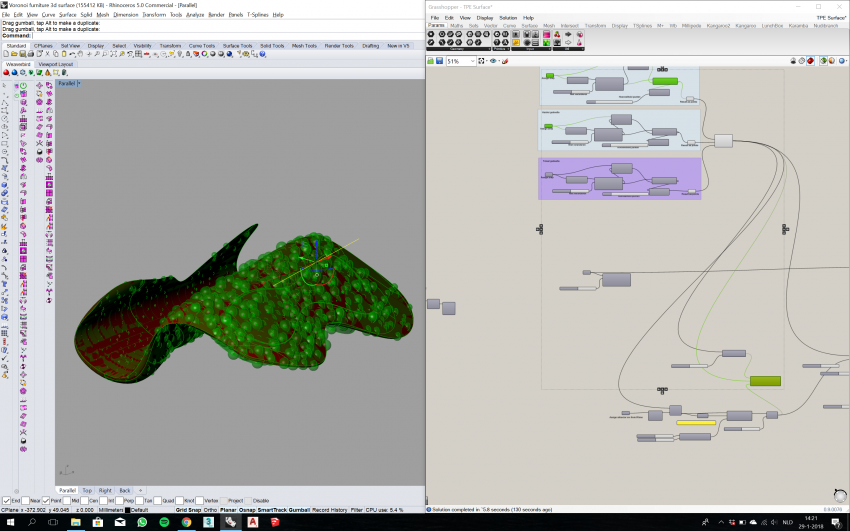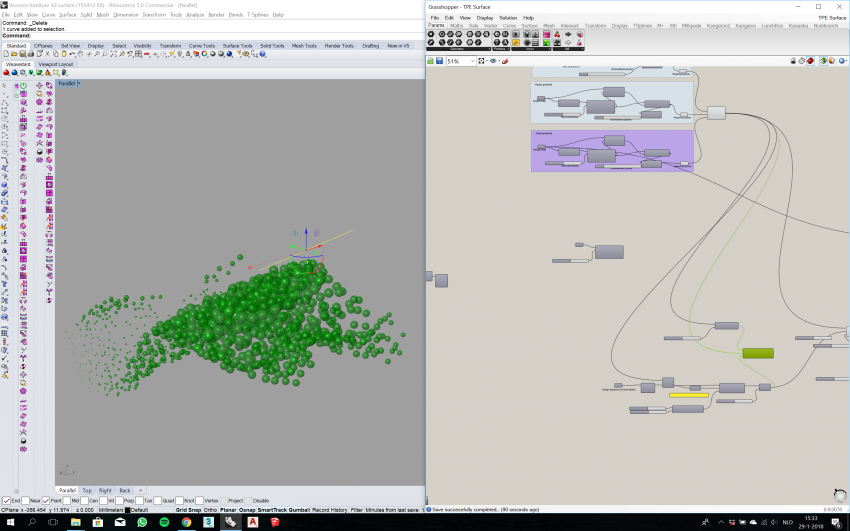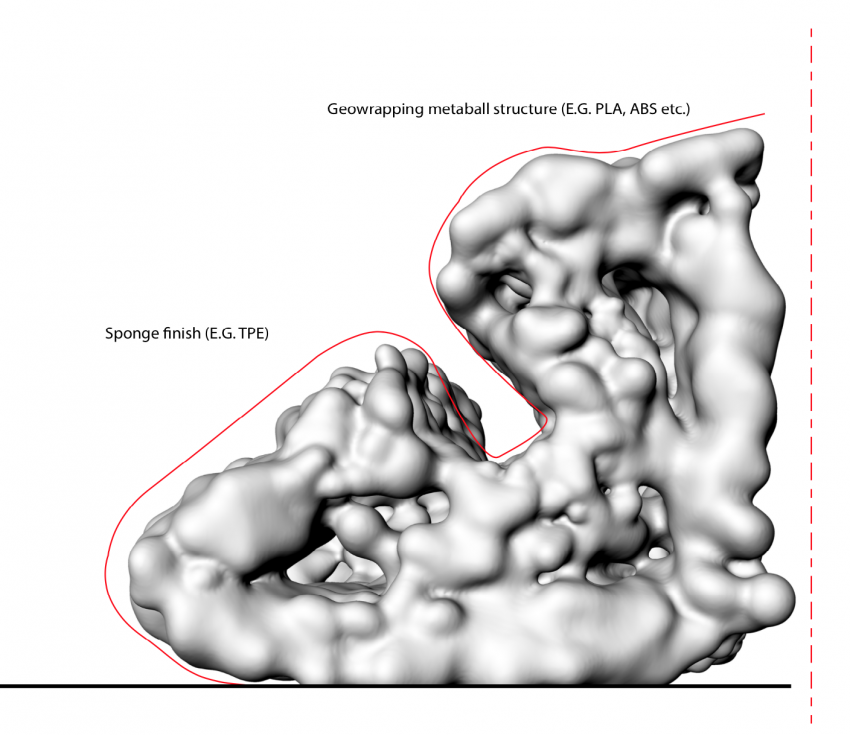Difference between revisions of "Msc1G4:Page3"
| Line 3: | Line 3: | ||
'''TUD 4''' | '''TUD 4''' | ||
| − | [[File:Banner_Bewar_&_Nino.png | 850px]] | + | [[File:G4-Banner_Bewar_&_Nino.png | 850px]] |
---- | ---- | ||
Revision as of 11:27, 1 February 2018
TUD 4
Bewar Ahmed - Nino Schoonen
TPE Surface
One of our main objectives for this research was to find a transition between structural material efficiency and using soft material where necessary. People doing excercises on the furniture should not be hurting themselves during the workout for example. Applying these soft surfaces only where they are required can save a lot of costs, as our chosen material: TPE filament (flexibility 85a) is more than four times more expensive than for example PLA filament. TPE has the characteristic quality of being able to deform a lot, without breaking itself over a long time. An alternative material with similar characteritics but even better lasting capabilities is Arnitel, yet this is twice as expensive as TPE.
Assembly
Design strategy
Assigning TPE Area's with T-Splines, optimizing density with different box clouds, making the area where more cushion effect is needed more dense populated, or almost not populated where no cushion effect is required.
Optimizing the Sphere-radius with attractor curves. Bigger Spheres increase the cushion effect.
